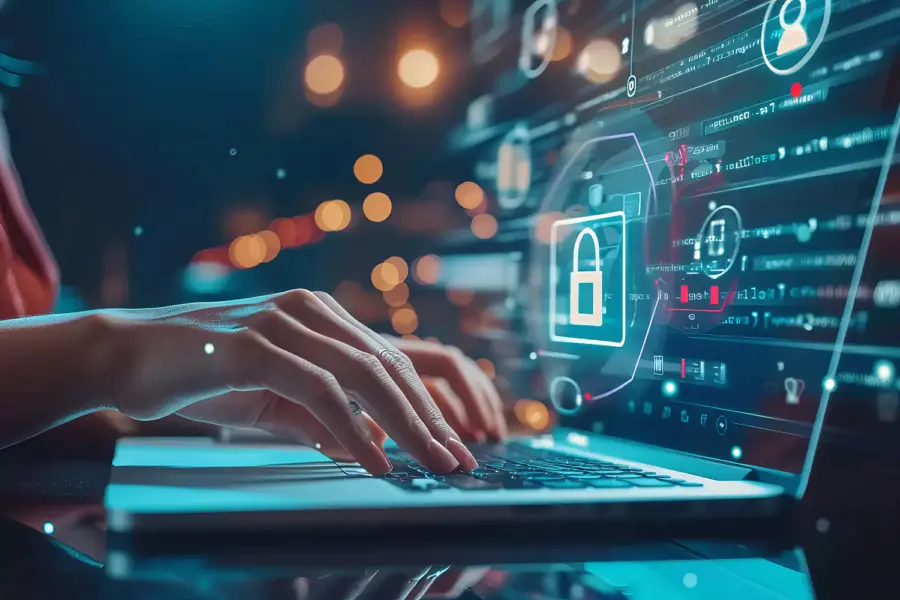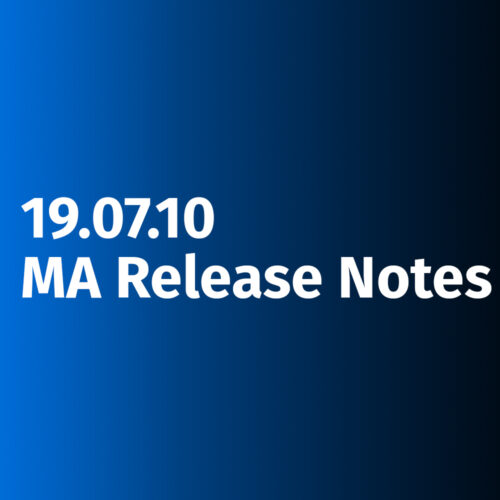Software powers enterprise operations. It enables data flows, automates processes, provides an exceptional user experience, and surfaces insights for team decision-making across key functions. But when software licenses expire, they wreak havoc on the business. In addition, failing to use licenses to their full capacity results in wasted spending. By proactively managing software licenses, IT teams improve software availability and increase business profits. By doing so, they can ensure compliance, make better decisions, and optimize processes while avoiding unnecessary headaches. This article covers:
- Introduction to software license management: How IT teams can use software license management (SLM) products in conjunction with a CMDB to track software and visualize the interconnected web of application dependencies to the various business functions they serve.
- Controlling and optimizing costs: IT can lose visibility into portfolios when employees buy their own software or business functions purchase a large number of licenses without knowing who is using what. This leads to redundant spending that can be reduced or eliminated when IT teams have better visibility.
- Improving compliance and risk mitigation: Maintaining a near-real-time inventory of all software assets helps IT teams meet regulatory, vendor and customer requirements governing data privacy and security and software upgrades.
- Enhancing operational efficiency: CMDB solutions with integrated software license management capabilities provide analytics, reporting, and other automated processes that offer the insights IT and other teams need to optimize critical processes.
- Improving strategic planning and decision-making: Key stakeholders can use software inventory information and dependency mapping to focus key decisions, such as growing into new regions or business areas, migrating to cloud, and offering new business services.
- Integrating with IT systems and workflows: Software license data can be integrated with procurement, contract management, risk management, security, IT service management, and other data, speeding time to insight and enabling better troubleshooting.
Why Software Licensing Management Is So Important
Enterprise use of software is only increasing as they embrace digitization, automation, analytics, and artificial intelligence (AI). These tools include SaaS business applications; cloud solutions such as Infrastructure as a Service (IaaS) or Platform as a Service (PaaS); virtualized software; and on-premises software, such as applications that require data sovereignty or heightened security controls. Application spending is the largest category of spending in the IT budget and, by 2032, will represent nearly a third of it (32%).
SaaS adoption is growing fast: More than half (60%) of all software tools are now SaaS. According to a recent survey, the average organization will use 269 SaaS applications in 2024 and spent $45M last year on these solutions. Companies with over 10,000 employees use an average of 650 SaaS applications and spent $245.1M on these tools last year.
With a sprawling software portfolio and so much money at stake, it’s easy to see why software license management has become an essential discipline at companies today. Despite this reality, 70% of teams still use legacy approaches, such as manual processes and spreadsheets, to track software. That same percentage also believes their license tracking methods are not accurate and could be better.
Device42 is a CMDB solution uses agentless discovery processes to identify software wherever it lives—SaaS, in the cloud, virtualized, or on-premises. This tool allows IT operations teams to maintain an up-to-date, comprehensive inventory of all software assets without maintaining separate tools for tracking different tools. IT can also provide automated reports and analytics to other teams for decision-making, who, in turn, use these insights to optimize their operational processes. Examples of reports include software by location and type, prohibited software, licenses soon to expire, and more.
Controlling and Optimizing Costs
In 2024, companies only used 49% of their provisioned SaaS licenses, resulting in an average of $18M in wasted IT spending. One primary reason this occurs is that employees can purchase and expense their software using business credit cards, or enterprise-wide licenses purchased go unused. As a result, these fall outside the purview of IT and often become “shadow IT”—unknown, unmanaged software. A CMDB solution with software license management tools captures vital software information in near-real-time, comparing the total discovered count to purchased counts. IT teams may discover software that they have purchased, but not installed or redundant copies of software.
With this information, IT teams can decommission unnecessary software, avoiding over-licensing and unnecessary spending. With accurate information on software portfolios and spending, IT can also plan future needs to equip businesses, teams, and new hires with the software they need to be productive.
Improving Compliance and Risk Mitigation
Managing software proactively helps enterprises meet customer and regulatory compliance requirements and reduce risks. Large enterprise customers may either explicitly require that their providers actively manage software asset portfolios and keep them up-to-date or have data privacy and security requirements that implicitly require the same level of monitoring and management. For example, Department of Defense organizations typically spell out software update and security requirements in contracts, while the Health Insurance Portability and Accountability Act, Health Information Technology for Economic and Clinical Health Act (HITECH Act), and Payment Card Industry Data Security Standard (PCI-DSS) stress the importance of using safeguards to protect systems and data.
IT teams that use Device42 centralize software licensing monitoring and management, gain accurate reports they can share with customers and regulators, and use alerts to drive remediation. Device42 alerts help IT teams identify end-of-life and prohibited software for decommissioning and vulnerable software needing patching. IT can actively track license and expiration dates, gaining time to negotiate renewal contracts and using data to solve contract disputes, such as how many licenses are in use. By doing so, IT can help minimize audit exposure and avoid the risks of using unauthorized or out-of-date software.
Enhancing Operational Efficiency
As portfolios grow, manual tracking of software licenses is becoming impossible. These processes are inefficient and out-of-date, leading to errors and omissions that harm the business.
Device42 provides a centralized platform for managing software asset license data, ensuring compliance with vendor and customer requirements, and reducing operational complexity. IT teams can use Device42 to assign individual solutions to software suites, such as Adobe tools, to an overarching Adobe suite, avoiding the need to track components individually. In addition, Device42 accommodates different licensing models, such as user-based, device- or CPU-based, client access per seat, or key-based models.
With automated processes like discovery, dependency mapping, analytics, and reporting, IT teams gain more time to work on strategic projects or help stakeholders make software decisions.
Improving Strategic Planning and Decision-Making
IT teams and other stakeholders continually make strategic decisions that involve software. For example, they may enter new regions, establish business units, and hire more staff in key locales. IT may virtualize technology and migrate workloads to the cloud. The business may encourage employees to experiment with data and AI and develop and deploy digital solutions based on cloud services. In addition, procurement and business teams may review emerging or existing business requirements against the landscape of software vendors: deciding to start new relationships, end others, or move from one vendor to another.
All of these decisions involve software. As a result, procurement, IT, and business stakeholders must develop a comprehensive understanding of the current enterprise software portfolio and how it is used to make the best decisions to support growth and operational imperatives.
Device42 provides powerful visualizations and analytics that help key stakeholders make informed decisions about procuring, using, and decommissioning software. The tool also reveals dependencies and traffic flows, providing insights into which workloads would be good candidates for cloud migration or applications that may need more capacity to resolve performance bottlenecks.
Integrating Software License Data with IT Systems and Workflows
Many enterprise workflows rely on software license data to optimize asset utilization, ensure compliance, and drive business success.
Procurement teams use software license data in financial systems to track costs, reconcile invoices, settle disputes, and project future licensing needs. This data also flows into risk management solutions, enabling teams to identify and mitigate licensing risks. Security teams integrate software licensing data with identity and asset management systems, using analytics and controls to ensure that software is only accessible to authorized users. Teams can automate license allocation and de-provision software when users’ roles change or leave the organization. Finally, IT service management (ITSM) systems use software licensing data to streamline provisioning and troubleshoot incidents, such as when software expires or isn’t allocated correctly.
Device42 provides an extensive API library and connectors for integrating data into other solutions. It integrates with FreshService, PagerDuty, and many other solutions to streamline ITSM processes.
With up-to-date software license data, analytics, and reports available, teams can gain insight and focus more on improving their business processes.
Protect and Grow Your Business with Effective Software License Management
Gaining control over software license management and using insights to optimize processes will unlock fresh value across your business. Your teams can use analytics and reporting to optimize costs, improve compliance and risk mitigation, enhance operational efficiency, make better decisions, and streamline key workflows.
Device42 provides software license tracking capabilities that help you monitor, manage, and rightsize SaaS, cloud, virtualized, and on-premise software portfolios



